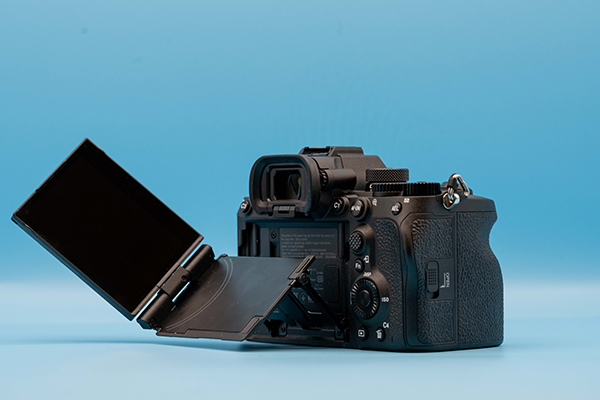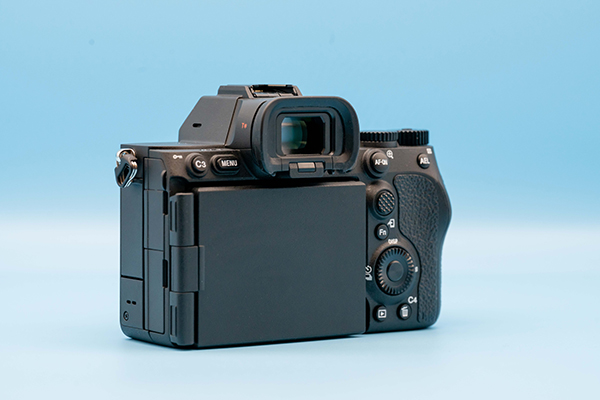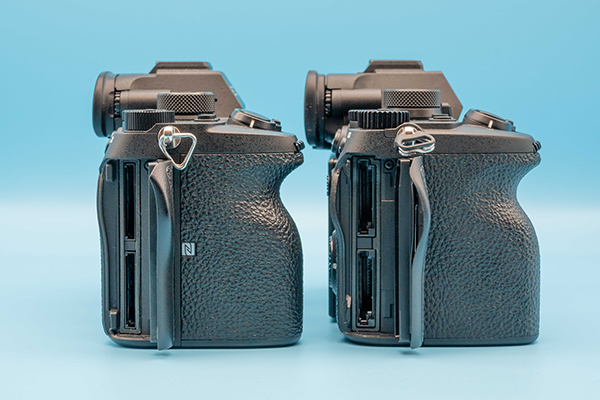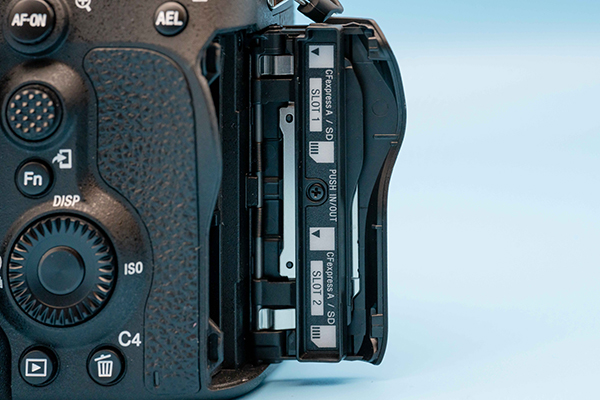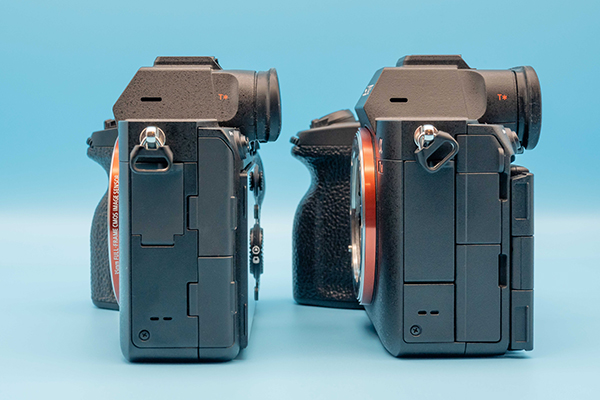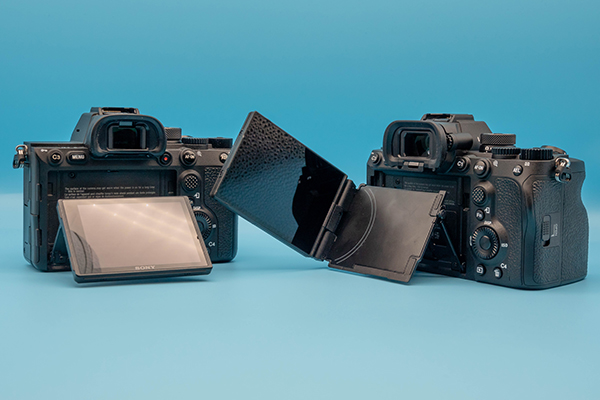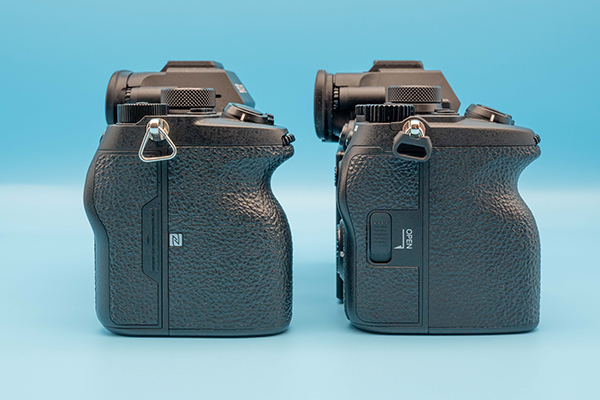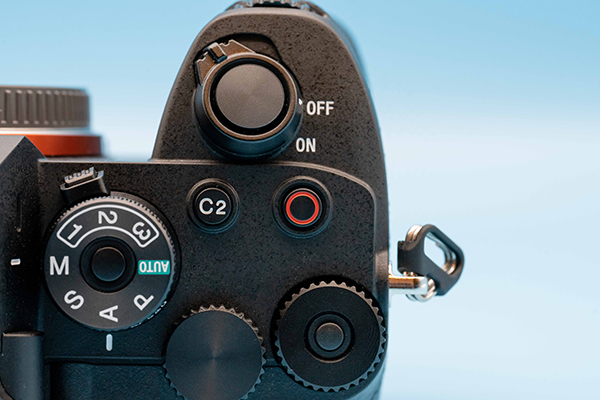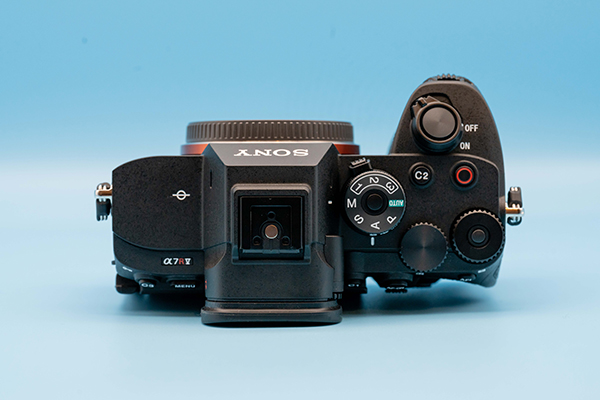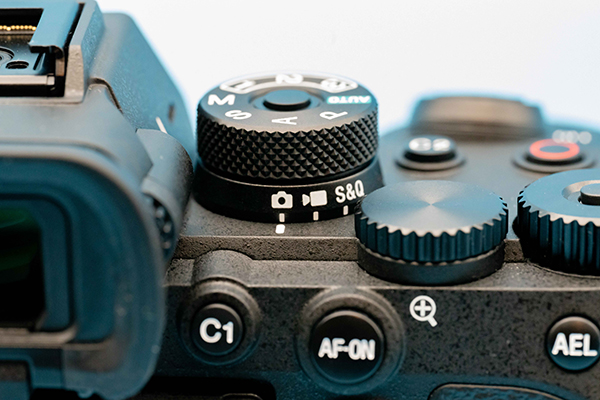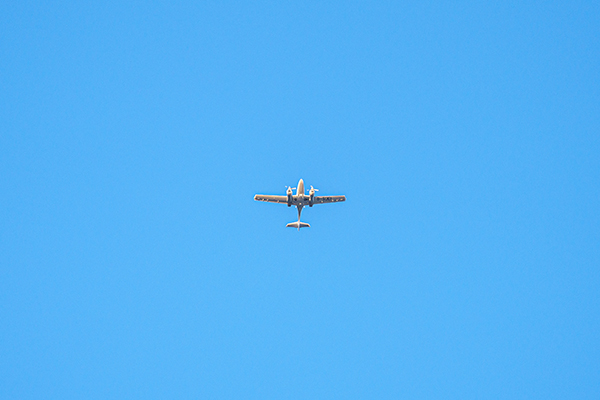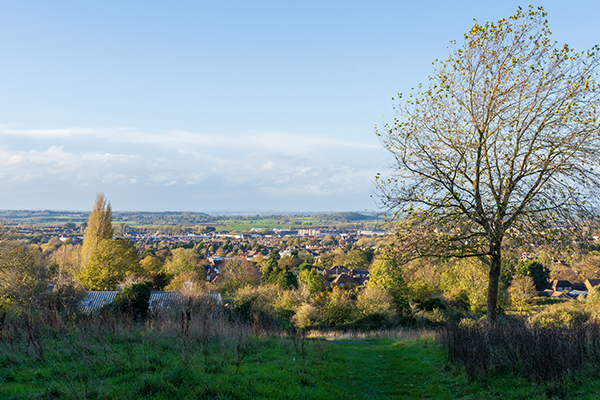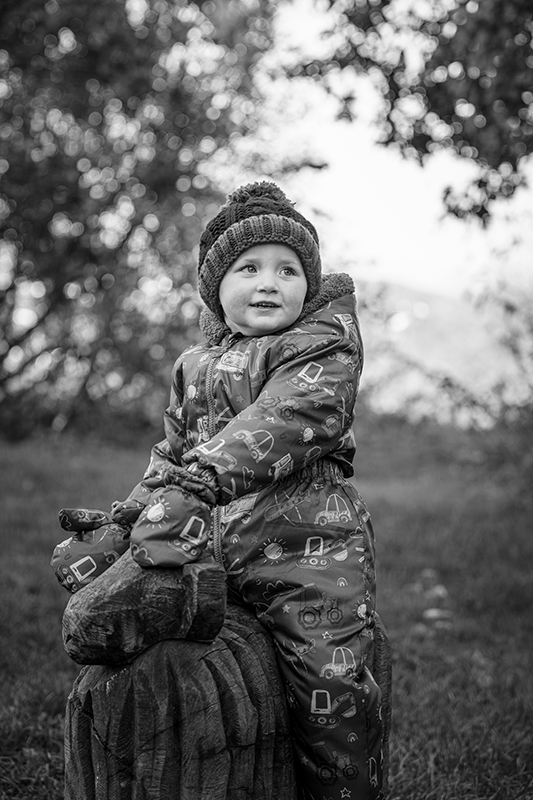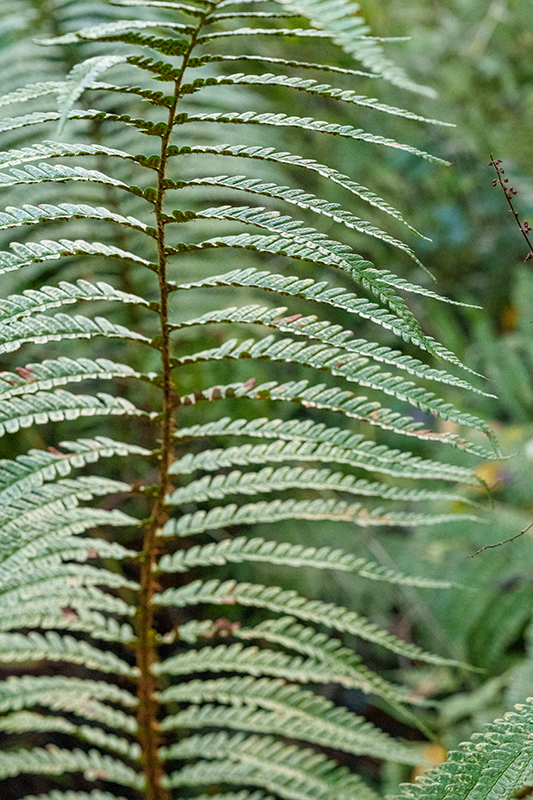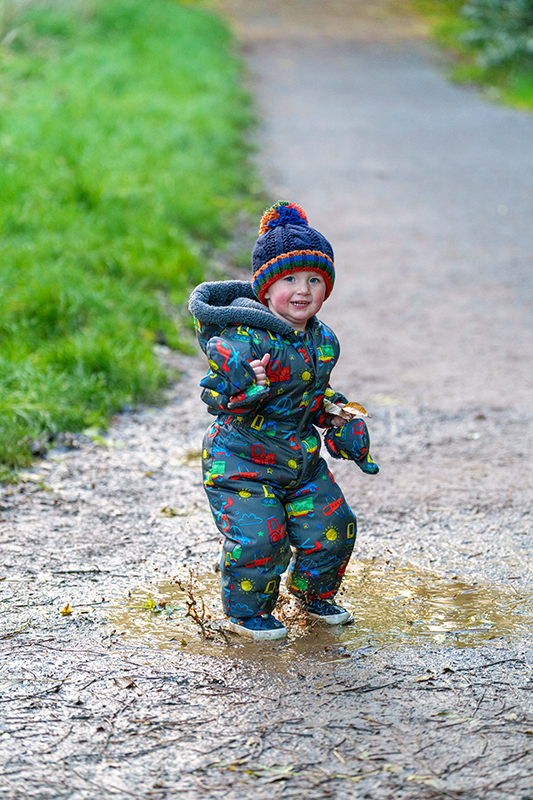The Ultimate Guide to the Sony A7R V

So, it is here! The long-awaited replacement and fifth version of the Sony Alpha 7R. The Sony A7R V. The new king of resolution.
Released towards the end of 2022, this camera has caused quite a stir. And having had my hands on it for a few months now I think I’m ready to give my opinion on this beast.
We’re going to dive into the differences and upgrades of this new camera, compare it to its predecessor and, with the help of a side-by-side spec comparison, find out what these changes mean for your photography.
Ready? Let’s go!
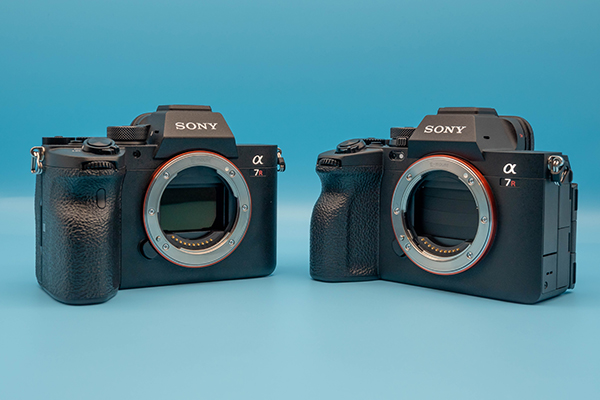
What does the R mean?
Resolution. That’s the short answer. Now here’s the longer one:
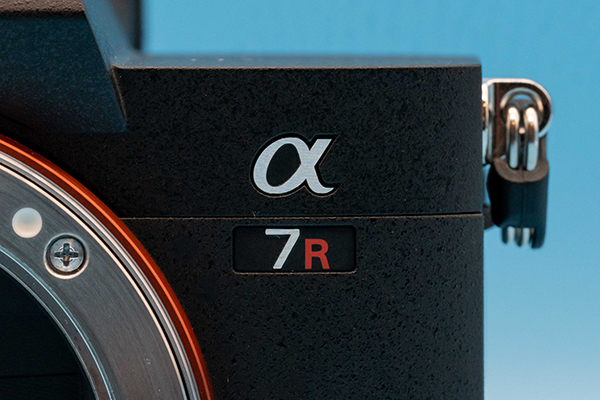
The Sony Alpha A7R is a part of the Sony Alpha Series, Sony’s full-frame mirrorless camera range. The whole range shares some features but each thread of the Sony Alpha Series (R, S and regular) prioritises one aspect of photography over another.
- Sony Alpha R cameras – prioritise Resolution
- Sony Alpha S cameras – prioritise Speed
- Sony Alpha cameras – prioritise Hybrid Shooting
The main difference in the R range is that these cameras have more megapixels in the sensor, meaning more resolution in your photos.
To give an idea, the first A7R featured a 36-megapixel, full-frame CMOS sensor, 12 megapixels more than the standard A7 (24 megapixels). Then the Mark II upped that to a 42-megapixel, full-frame BSI (Back-Side Illuminated) CMOS sensor. This new BSI sensor improved sensor readout speed and low-light imaging capabilities.
The Mark III kept the same sensor resolution as the Mark II but improved on other parts of the camera. Then the Mark IV took the leap and jumped the resolution to a whopping 61MP sensor. Now, the Mark V features the same megapixels as the IV, but don’t be disappointed, Sony made some significant changes to its fifth iteration to make it stand out from the crowd.
Following? Let’s keep going.
So, what is all this resolution from a full-frame mirrorless camera good for?
Well, the higher the resolution of an image the larger you can print it. For example, a 61-megapixel image can print large wall art, and even bigger, whilst retaining quality.
Another benefit of a higher resolution is it can be useful when editing. With more information in the image thanks to more pixels within the frame you can crop your images tighter while retaining that quality. This sort of resolution in a full-frame mirrorless camera will benefit the likes of Landscape, Wedding and Portrait photographers.
Release of the A7R V
The Sony Alpha A7R V was released in October 2022. Being the latest version in the A7R range it was surprising, at first, to see that it still featured the same 61-megapixel Exmor BSI CMOS full-frame sensor as the IV.
However, there is something new that the V has that the IV does not. Take a look at the side-by-side spec comparison to see if you can spot it.
|
Specs |
||
|---|---|---|
|
Sensor Type |
BSI-CMOS |
BSI-CMOS |
|
Sensor Size |
Full Frame |
Full Frame |
|
Megapixels |
61 Megapixels |
61 Megapixels |
|
Processor |
Bionz X |
Bionz XR |
|
Max Resolution |
9504 x 6336 |
9504 x 6336 |
|
Ratios |
1:1, 4:3, 3:2, 16:9 |
1:1, 4:3, 3:2, 16:9 |
|
ISO Range |
100-32000 |
100-32000 |
|
Boosted ISO Range |
50-102800 |
50-102800 |
|
White Balance presets |
9 |
9 |
|
Image Stabilisation |
Sensor Shift 5 Axis, up to 5.5 stops |
Sensor Shift, up to 8 stops |
|
RAW |
Compressed, Uncrompressed |
Compressed, Lossless Comp S, M or L, Uncompressed |
|
JPEG |
Extra Fine, Fine, Standard |
Extra Fine, Fine, Standard, Light |
|
File Formats |
JPEG, RAW (Sony ARW V2.3) |
JPEG, HEIF, RAW (Sony ARW V2.3) |
|
Autofocus modes |
Contrast Detect, Phase Detect, Multi-Area, Center, Selective Single-point, Tracking, Single, Continuous, Touch, Face Detection, Live View, Eye AF, Animal Eye AF |
Contrast Detect, Phase Detect, Multi-Area, Center, Selective Single-point, Tracking, Single, Continuous, Touch, Face Detection, Live View, Eye AF, Animal Eye AF, Bird, Insect, Car, Train, Airplane |
|
Digital Zoom |
2x - 4x |
2x - 4x |
|
Focal Points |
567 |
693 |
|
Lens Mount |
Sony E, FE |
Sony E, FE |
|
Screen Type |
Tilting |
Tilting & Side 180° |
|
Screen Size |
3” |
3.2” |
|
Screen dots |
2,360,000 |
2,100,000 |
|
Touch Screen |
Yes |
Yes |
|
Viewfinder Type |
Electronic |
Electronic |
|
Viewfinder Coverage & Resolution |
100%, 5,760,000 |
100%, 9,440,000 |
|
Minimum Shutter Speed |
30 Seconds |
30 Seconds |
|
Maximum Shutter Speed |
1/8000 Seconds |
1/8000 Seconds |
|
Exposure Modes |
Program Auto, Aperture Priority, Shutter Priority, Manual |
Program Auto, Aperture Priority, Shutter Priority, Manual |
|
Flash |
Hot Shoe Flash Compatible, no built in flash |
Hot Shoe Flash Compatible, no built in flash |
|
Flash Modes |
Flash off, Autoflash, Fill-flash, Slow Sync., Rear Sync., Red-eye reduction, Wireless, Hi-speed sync. |
Flash off, Autoflash, Fill-flash, Slow Sync., Rear Sync., Red-eye reduction, Wireless, Hi-speed sync. |
|
Flash Sync Speed |
1/250 Seconds |
1/250 Seconds |
|
Shutter/Drive Modes |
Single, Continuous Hi+ / Hi / Mid/ Lo, Self Timer, Bracketing Exposure / WB / DRO |
Single, Continuous Hi+ / Hi / Mid/ Lo, Self Timer, Bracketing Exposure / WB / DRO |
|
FPS |
Up to 10 FPS |
Up to 10 FPS |
|
Metering |
Multi, Center-weighted, Highlight-weighted, Average, Spot |
Multi, Center-weighted, Highlight-weighted, Average, Spot |
|
AE Bracketing |
±5 (3, 5 frames at 1/3 EV, 1/2 EV, 2/3 EV, 1 EV steps) |
±5 (2, 3, 5, 7 frames at 1/3 EV, 1/2 EV, 2/3 EV, 1 EV, 2 EV steps) |
|
Exposure Compensation |
±5 (at 1/3 EV, 1/2 EV steps) |
±5 (at 1/3 EV, 1/2 EV steps) |
|
Video Formats |
MPEG-4, XAVC S, H.264 |
MPEG-4, XAVC S, XAVC HS, XAVC S-I, H.264, H.265 |
|
Video Modes |
3840 x 2160 @ 30p / 100 Mbps, XAVC S, MP4, H.264, Linear PCM 3840 x 2160 @ 25p / 100 Mbps, XAVC S, MP4, H.264, Linear PCM 3840 x 2160 @ 24p / 100 Mbps, XAVC S, MP4, H.264, Linear PCM 1920 x 1080 @ 120p / 100 Mbps, XAVC S, MP4, H.264, Linear PCM 1920 x 1080 @ 60p / 50 Mbps, XAVC S, MP4, H.264, Linear PCM 1920 x 1080 @ 60i / 24 Mbps, AVCHD, MTS, H.264, Dolby Digital 1920 x 1080 @ 30p / 50 Mbps, XAVC S, MP4, H.264, Linear PCM 1920 x 1080 @ 25p / 50 Mbps, XAVC S, MP4, H.264, Linear PCM 1920 x 1080 @ 24p / 50 Mbps, XAVC S, MP4, H.264, Linear PCM |
7680 x 4320 @ 25p / 400 Mbps, XAVC HS, MP4, H.265, Linear PCM 7680 x 4320 @ 23.98p / 400 Mbps, XAVC HS, MP4, H.265, Linear PCM 7680 x 4320 @ 25p / 200 Mbps, XAVC HS, MP4, H.265, Linear PCM 7680 x 4320 @ 23.98p / 200 Mbps, XAVC HS, MP4, H.265, Linear PCM 3840 x 2160 @ 60p / 600 Mbps, XAVC S-I, MP4, H.264, Linear PCM 3840 x 2160 @ 50p / 500 Mbps, XAVC S-I, MP4, H.264, Linear PCM 3840 x 2160 @ 60p / 200 Mbps, XAVC HS, MP4, H.265, Linear PCM 3840 x 2160 @ 50p / 200 Mbps, XAVC HS, MP4, H.265, Linear PCM 3840 x 2160 @ 60p / 150 Mbps, XAVC HS, MP4, H.265, Linear PCM 3840 x 2160 @ 50p / 150 Mbps, XAVC HS, MP4, H.265, Linear PCM 3840 x 2160 @ 60p / 100 Mbps, XAVC HS, MP4, H.265, Linear PCM 3840 x 2160 @ 50p / 100 Mbps, XAVC HS, MP4, H.265, Linear PCM 3840 x 2160 @ 60p / 75 Mbps, XAVC HS, MP4, H.265, Linear PCM 3840 x 2160 @ 50p / 75 Mbps, XAVC HS, MP4, H.265, Linear PCM 3840 x 2160 @ 60p / 45 Mbps, XAVC HS, MP4, H.265, Linear PCM 3840 x 2160 @ 50p / 45 Mbps, XAVC HS, MP4, H.265, Linear PCM 3840 x 2160 @ 60p / 200 Mbps, XAVC S, MP4, H.264, Linear PCM 3840 x 2160 @ 50p / 200 Mbps, XAVC S, MP4, H.264, Linear PCM 3840 x 2160 @ 60p / 150 Mbps, XAVC S, MP4, H.264, Linear PCM 3840 x 2160 @ 50p / 150 Mbps, XAVC S, MP4, H.264, Linear PCM 3840 x 2160 @ 30p / 300 Mbps, XAVC S-I, MP4, H.264, Linear PCM 3840 x 2160 @ 25p / 250 Mbps, XAVC S-I, MP4, H.264, Linear PCM 3840 x 2160 @ 30p / 140 Mbps, XAVC S, MP4, H.264, Linear PCM 3840 x 2160 @ 25p / 140 Mbps, XAVC S, MP4, H.264, Linear PCM 3840 x 2160 @ 30p / 100 Mbps, XAVC S, MP4, H.264, Linear PCM 3840 x 2160 @ 25p / 100 Mbps, XAVC S, MP4, H.264, Linear PCM 3840 x 2160 @ 30p / 60 Mbps, XAVC S, MP4, H.264, Linear PCM 3840 x 2160 @ 25p / 60 Mbps, XAVC S, MP4, H.264, Linear PCM 3840 x 2160 @ 23.98p / 240 Mbps, XAVC S-I, MP4, H.264, Linear PCM 3840 x 2160 @ 23.98p / 100 Mbps, XAVC HS, MP4, H.265, Linear PCM 3840 x 2160 @ 23.98p / 50 Mbps, XAVC HS, MP4, H.265, Linear PCM 3840 x 2160 @ 23.98p / 30 Mbps, XAVC HS, MP4, H.265, Linear PCM 3840 x 2160 @ 23.98p / 100 Mbps, XAVC S, MP4, H.264, Linear PCM 3840 x 2160 @ 23.98p / 60 Mbps, XAVC S, MP4, H.264, Linear PCM 1920 x 1080 @ 60p / 222 Mbps, XAVC S-I, MP4, H.264, Linear PCM 1920 x 1080 @ 30p / 111 Mbps, XAVC S-I, MP4, H.264, Linear PCM 1920 x 1080 @ 24p / 89 Mbps, XAVC S-I, MP4, H.264, Linear PCM 1920 x 1080 @ 120p / 100 Mbps, XAVC S, MP4, H.264, Linear PCM 1920 x 1080 @ 120p / 60 Mbps, XAVC S, MP4, H.264, Linear PCM 1920 x 1080 @ 60p / 50 Mbps, XAVC S, MP4, H.264, Linear PCM 1920 x 1080 @ 60p / 25 Mbps, XAVC S, MP4, H.264, Linear PCM 1920 x 1080 @ 60i / 24 Mbps, AVCHD, MTS, H.264, Dolby Digital 1920 x 1080 @ 30p / 50 Mbps, XAVC S, MP4, H.264, Linear PCM 1920 x 1080 @ 30p / 16 Mbps, XAVC S, MP4, H.264, Linear PCM 1920 x 1080 @ 25p / 50 Mbps, XAVC S, MP4, H.264, Linear PCM 1920 x 1080 @ 24p / 50 Mbps, XAVC S, MP4, H.264, Linear PCM |
|
Microphone/Headphone Input |
Stereo, External Input |
Stereo, External Input |
|
Card Slot(s) |
Dual SD/SDHC/SDXC (UHS-II compatible) |
Dual UHS-II SD/CFexpress Type A slots |
|
HDMI |
Micro HDMI |
Full-Size HDMI |
|
USB (Charging) |
Yes, USB 3.2 Gen 1 (5GBit/sec) |
Yes, USB PD Supported, USB 3.2 Gen 2 (10 GBit/sec) |
|
Remote Control |
Yes, via Smartphone |
Yes, via Smartphone |
|
Body Material |
Magnesium Alloy |
Magnesium Alloy |
|
Weather Sealing |
Yes |
Yes |
|
Battery & Battery Life |
NP-FZ100, 670 shots per charge |
NP-FZ100, 530 shots per charge |
|
Weight |
665g |
723g |
|
Dimensions |
129 x 96 x 78 mm |
131 x 97 x 82 mm |
|
Orientation Sensor |
Yes |
Yes |
|
GPS |
No |
No |
|
Timelapse |
Yes |
Yes |
|
Price (*at time of blog) |
£2999* |
£3999* |
A7R IV vs A7R V what’s the difference?
At first glance, it can seem as though there’s not much change. But look closer and you will notice that Sony has tweaked a fair bit of the camera to make some unique changes.
The first major difference is the processor. The Sony A7RV now features Sony’s Bionz XR processor which has eight times more processing power than the Bionz X. This bigger brain power in the camera means less latency and improves movie processing.
It also means improvements for the following:
- Faster AF processing
- Faster Face and Eye detection
- Better colour reproduction
- High-Speed Frame rates
What is interesting is that we have seen this processor before in the A7S III. This really boosts the overall performance and speed which is great if you need a camera that can process and save data quickly. For example, a wedding photographer who can’t miss a moment. Roll on the Bionz XR-powered A7R V!
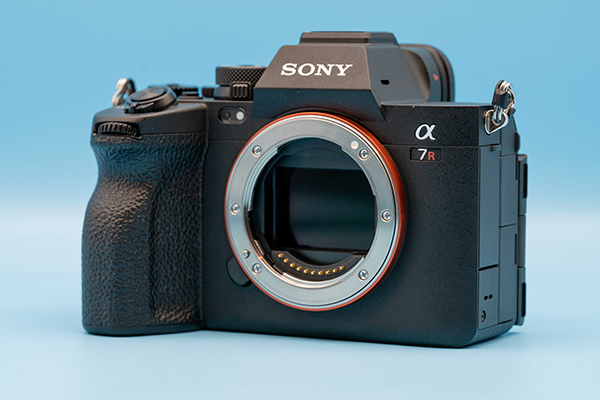
Beefed UP EVF & Screen
Sony has also taken the EVF from the A7S III and given it to the R V. With a refresh rate of up to 120fps and 9.44M-dots this is a big upgrade to the 5.76M-dot EVF in the R IV.
The LCD screen is also bigger than the IV. The V features a 3.2” rear screen with touch controls and instant zoom to the sharpest point in your image.
The biggest change for the LCD is the 4-axis tilt and swivel screen. It is like a combination of the Sony A7R IV’s tilting LCD and the A7 IV’s flip-out screen. With this addition, you can now flip the screen 180º which is really beneficial to videographers into vlogging, and photographers who always find themselves at unique angles.
In-Camera AI
Thanks to that new processor, the A7R V features a new deep-learning AI processing unit.
Yes, AI in a camera!
Before you get excited, this doesn’t mean Skynet is going to start hunting down a Mr John Connor. No, this AI works with the Autofocus system of the camera to help power and improve the real-time autofocus across the 693 focal points.
This means the AI has impressive subject recognition that uses human pose estimation to help work out where the face and eyes of the subject are. Even when the subject or person has turned away from the camera. This is then used to help build a picture and track the entire human form, meaning much less chance of losing focus on a moving subject.
This will be very beneficial for sports and wildlife photographers which is a huge game-changer as previously these customers would have been reaching for a Sony A7S due to its speed priorities.
Carrying on with the AI and AF. Sony has added Planes, Trains and Automobiles to their already impressive AF detection, as well as adding more animals including insects and birds. This, alongside the already their Human Eye AF and Animal Eye AF builds up a comprehensive catalogue of almost any subject imaginable.
When selected, the camera looks out for these subjects in the frame. Using its AI learning it will pick up a bird and keep the focus on it as long as they are in the frame. It even works when the subject has temporarily moved behind a minor obstruction, predicting where it will come out and back into view.
This will be very beneficial for wildlife photographers who want to get sharp images, even when their subject is in motion. Or for portrait photographers who require an exact lock on to their subject’s eyes.
This combination of AI with autofocus and subject tracking is fantastic. The only question is when will Sony bring this into their more sports and wildlife-orientated cameras?
Small, Medium or Large?
Another change that has been introduced is the option to change the RAW file size. On the previous model, you could select compressed and uncompressed RAW. But now the A7R V lets you choose Small, Medium or Large Lossless Comp RAW. This will give great control to photographers who are required to keep their files to a certain size.
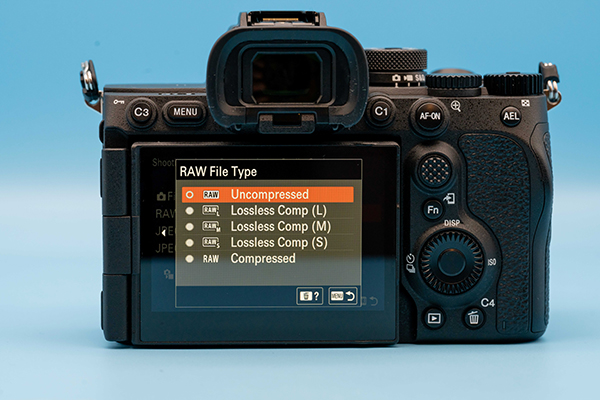
Video Spec 8K Boost
So, you may have noticed from the side-by-side above, that there is quite a change with regard to the video specifications. For starters, the A7R V is now capable of 8K 24p and 4K 60p video with 10-bit 4:2:2 recording. This is quite the double up from the 4K video capabilities in the previous model.
This balance of super high-res images and 8K video make this a surprising contender in the hybrid camera market.
The camera will allow up to 30 minutes of recording in 8K and unlimited in 4K, along with the same heatsink from the A7S III meaning you can go for longer without having to worry about overheating.
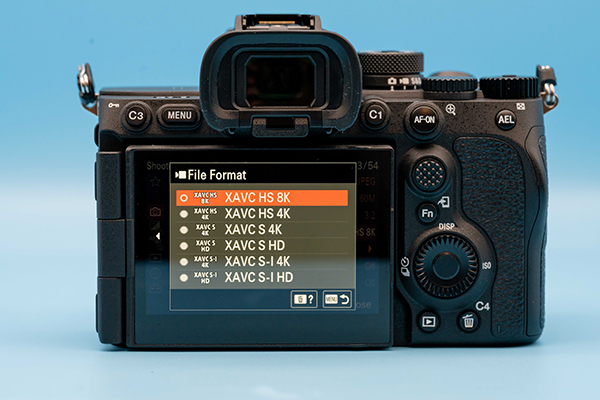
Shaky Hands?
As well as a bump up in the video recording capabilities, the A7R V also features a 16-bit Raw video stream over HDMI for capture in ProRes Raw with Atomos Ninja V or V+. Throw in the Active SteadyShot mode and in-body image stabilisation, and you almost have yourself the ultimate live streaming camera for vloggers!
Active SteadyShot constantly changes the region of the sensor to provide greater shake correction and can be used up to 4K60p. It really does seem that Sony is treating this R camera more like an FX cine-line.
In-Body Stabilisation or “floating sensors” are very common in mirrorless cameras these days. The A7R V features 5.5-stops with up to 8-stops of compensation available in stills. This means you can drop your shutter speed, leave your tripod at home and still capture pin-sharp images.
Faster Camera, Faster Cards
The A7RV features two multi-use card slots and can take up to 1x CFexpress Type A and 2x UHS-II SDXC/SDHC cards.
The addition of the CFexpress slot means you can boost performance and lower buffer times. Although they are more expensive they do come with a much bigger read and write speed compared to UHS-II.
240 Megapixel Photo
Pixel Shift Multi Shooting. This is great for landscapes or high-res conservation photography. In this mode the A7R V will capture 16 frames, moving the sensor position for each frame. Then using the Sony Image Edge Desktop software you can merge these to create a 240.8 Megapixel image (yes, it probably does mean a very big file).
Bringing it back to the in-camera AI, the A7R V even has Movement Correction which recognises and eliminates accidental objects, such as falling leaves, while the image is being captured.
Body Tweaks
At first glance, the A7R V looks very similar to the A7R IV but there are some details that have changed, hopefully for the better. For example, the already mentioned new screen grants better access while a full-sized HDMI port will be great for people using an external monitor.
The camera is marginally thicker than the previous model, but this doesn’t affect handling if you’re used to the alpha range. This is most likely due to the new screen and beefed-up internals requiring better heat dispersion.
There is now a dedicated switch wheel below the mode dial, that allows quick changes between stills, video or S&Q (slow & quick). The video record button is now located on the top near the shutter and C2 button, making it easier for activation for video users. However, as with most Sony kit, these buttons are re-programmable should you require a different function.
Overall thoughts
Now for my thoughts on the camera. Having used the A7R IV for a good couple of years covering weddings, events and plenty of other types of photography, using the A7R V for the first time I was not expecting a massive change.
But I was wrong! The internal changes from Sony make a huge difference, and may I say, a huge improvement as well.
Finding the settings on the camera was a lot easier compared to the previous model thanks to the new Sony menus. The new processor and autofocus features make this camera highly responsive and great fun to shoot with.
The AI made keeping subjects in focus a lot easier and I found this helped me to keep my attention on other aspects of taking the shot. Much like a thirdhand being there to help.
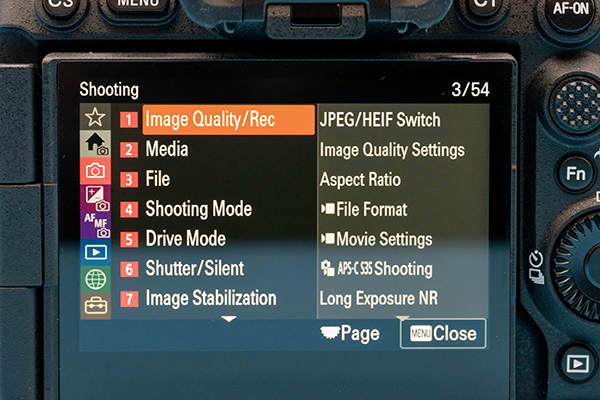
The new autofocus features even allowed me to branch out into areas of photography I rarely do – birds and wildlife. With the subject detection set to birds, it made it a lot easier for me to track and keep the bird in focus.
Where before I have struggled with my A7R IV to keep a flying bird in focus now all I need to do is keep the bird in the frame! Which, admittedly still takes practice. But the A7R V’s subject detection really helped me to keep the subject within the frame and in focus.
Where, on the A7R IV, the focus indicator would jump around the screen when tracking, the A7R V stayed locked in on that subject, even when the bird flew behind branches.
Despite the A7R range not really being designed for sports and wildlife, there’s no doubt that it can do it. And do it well. This camera seems to be a jack-of-all-trades with the added bonus of a huge and powerful sensor.
This was also great when out for a family walk as the autofocus was able to keep up with my very active 2-year-old. Taking the examples below, it was able to capture great focus on the face and eyes, even when they were running or moving fast. And with the added performance from the new processor, it really improved the original sensor’s capabilities, making the images a lot clearer and handling the noise better. In my opinion, it was producing a better image than my R IV.
The new screen is a huge improvement, having been shooting with Sony cameras for a while now (starting with the A6300 and moving to full frame with the A7 III and A7R IV) I have always found the basic tilt screen to be a hindrance when shooting low down in portrait. But I am so glad to see Sony catching up with the other brands and bringing in a more versatile screen.
I was able to get down much lower when shooting handheld, and even on some dutch angle photography, and still, I was able to see the composition and my settings so much clearer compared to the IV.
To conclude, I will say the A7R V has many improvements internally compared to the A7R IV, which makes the camera work so much better! Yes, it would have been interesting to see Sony go for a 100 Megapixel Full Frame. But why fix what’s not broken? Why not just improve on it? In my opinion, after using the A7R V, Sony has done exactly that!
It’s hard to imagine what this camera cannot do. If you are in the market for a high-resolution full-frame and mirrorless camera, you can’t go wrong if you pick up the Sony A7R V
Sony A7R V Sample Gallery
Click the images below to view them in full resolution.
Read next
- What is the best 24-70mm lens for Sony Alpha Cameras?
- Which Sony Alpha camera is best for you?
- An Hour with the Sony a7 IV with in-camera footage
Thank you!
Thanks for taking the time to read our blog, we really do hope they help you out and answer some of your questions. If you still have some unanswered, then please feel free to get in touch with our team of experts.
We have a LiveChat option on our website and we can, of course, be contacted via our email, we're also on the end of the phone too! Read more on how to contact us here >
Want to write for us?
If you've got experience with producing content on photo, video and/or optics products or techniques then we would love to hear from you. Contact our blog editor, Bea, with a sample of your work at [email protected].
- By James Barnes
- 13 Feb 2023




























































